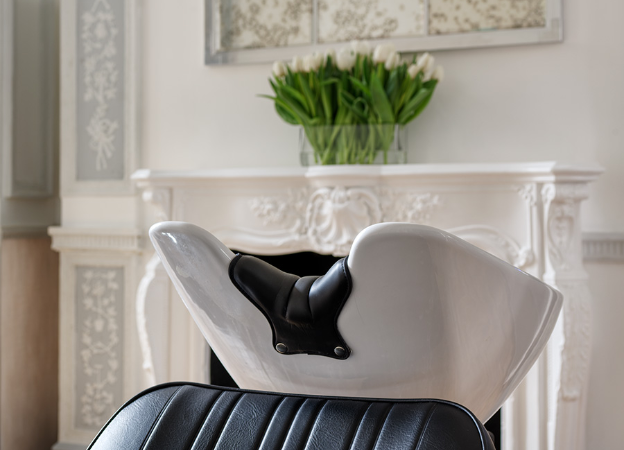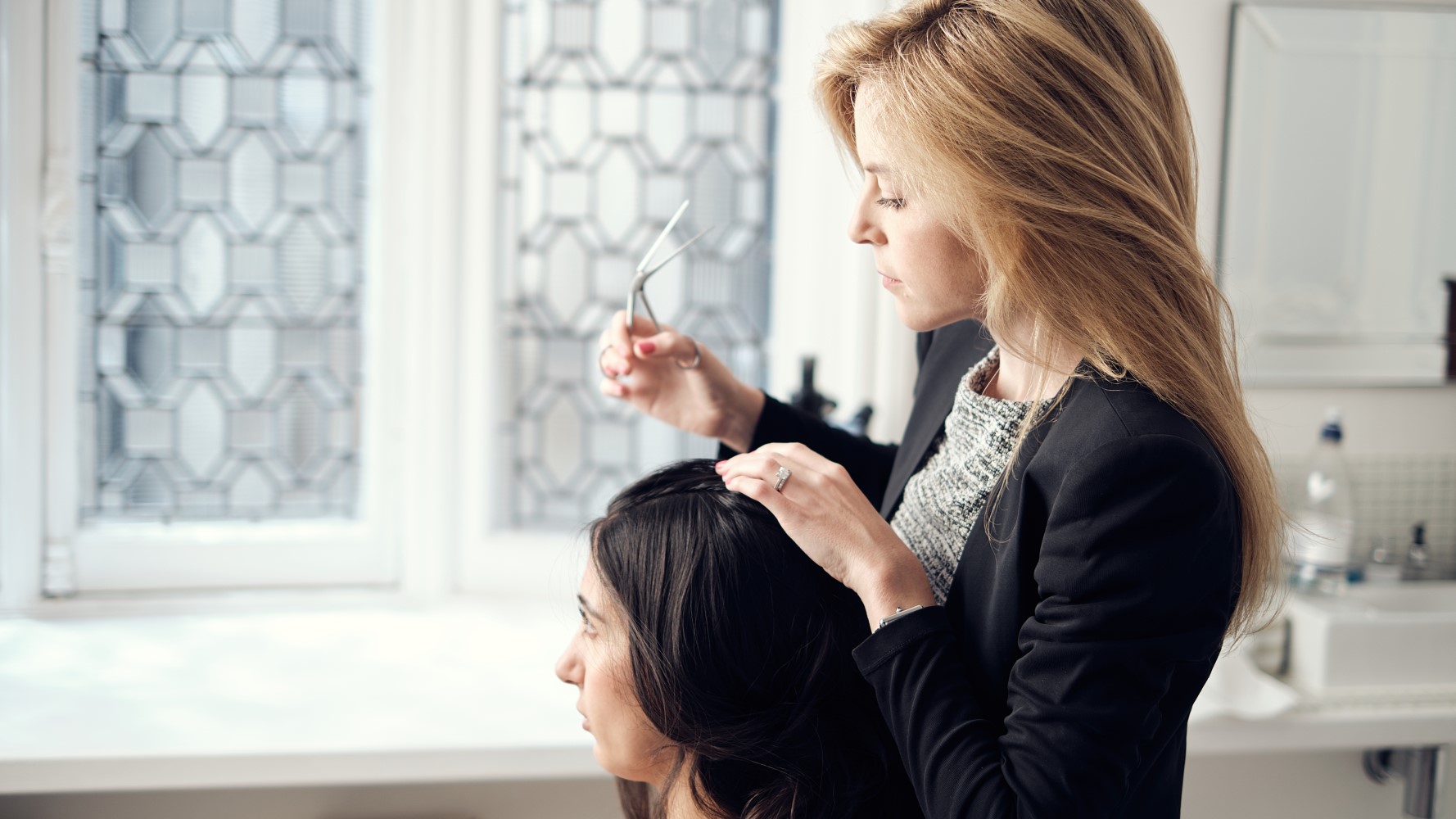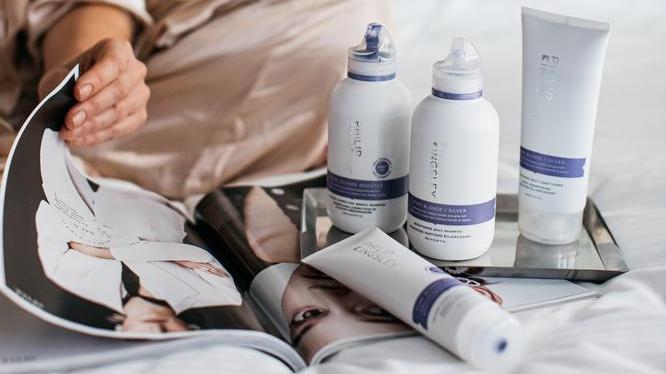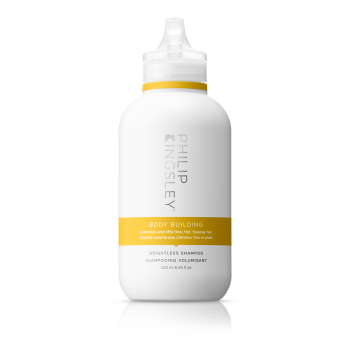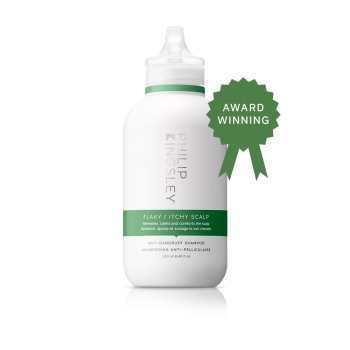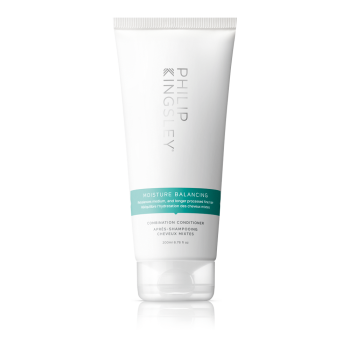FIND THE RIGHT HAIR PRODUCTS FOR YOU
At Philip Kingsley, our Trichologists create products for hair textures, scalp concerns and styling challenges. Now you can take the Online Hair Quiz to discover the right products for you and your hair.
But what exactly does an optimal daily hair care routine involve? Read on for our award-winning Trichologists’ advice on the best ways to show your hair some daily love. Then watch as your strands start to love you back.
Shampooing Your Hair
Decades of Trichological experience have proven to our experts — and our clients! — that a good shampooing technique can make a huge difference to the look and feel of your hair. Try incorporating these steps into your daily routine to promote the optimum vitality and wellbeing of your hair and scalp.
Identify Your Hair Texture
At Philip Kingsley, we pioneered the technique of classifying hair according to one of four textures:
- Fine
- Medium
- Coarse
- Natural Tightly Curled Curls
To find out what your hair texture is , and to choose a shampoo that will help you get the most out of your strands click here.
Start with a pre-shampoo treatment
As well as daily shampooing, we recommend including a detoxifying pre-shampoo treatment as part of your routine too. This will thoroughly cleanse and purify hair, and remove the build-up of pollution, impurities and residue. Our Vitamin C Jelly Pre-Shampoo Treatment is twice as effective at removing build-up compared to shampoo alone* and reveals strands that feel clean, soft, and weightless, with natural radiance restored. Its antioxidant powers protect the hair from free radical damage and the scalp from oxidative stress. The innovative powder-to-jelly formula can be applied to hair directly from the bottle, with results in just five minutes — simply add water to the powder and shake to activate the formula. Use every 2-3 weeks to keep hair looking purified and radiant. *Independent Instrumental Test
Pre-Soak
Pre-soaking your hair under the shower (or in the bathtub) is very important. If you wet your hair thoroughly, you will need less shampoo. Applying too much shampoo can cause your hair to look dull — besides being a waste of product.
Lather
Do not pour shampoo directly onto your hair. Instead, pour it onto the palm of your hand, rub your hands together, and then smooth the product over your hair. Massage your scalp with your fingertips in a gentle kneading motion for about 30 seconds, running your fingers through your hair every so often to avoid tangling. Do not rub your scalp too vigorously —this can cause hair breakage and scalp irritation.
You only need one shampoo if you wash your hair daily or every other day. If your hair is particularly dirty, try shampooing twice.
Detangle
Before wetting your hair, gently run a wide-tooth comb through it. If your hair is tangled when you start washing, it is likely to get more knotted. Start at your ends and gradually work your way up to the roots to avoid snarling and breakage.
We suggest using a ‘saw-cut’ comb in which each tooth is cut into it, making it smoother - they are available in plastic or vulcanite (hard rubber).
Avoid cheap plastic combs made from a mould as these can cut into your hair. Metal combs are even worse, since their edges can lacerate your hair.
Rinse
Even a thin coating of shampoo left on your hair can render it dull and limp. In fact, product residue is one of the most common causes of lank-looking hair. If you think you’ve rinsed enough, rinse again!
There is no need to finish off your rinse with cold water, unless you enjoy it. A cold rinse does not make your hair shinier — but conditioning does!
How Often Should You Shampoo?
Our expert Trichologists recommend daily shampooing to help deliver bounce and shine to all hair types. Your hair accumulates bits of dirt, dust, oil and grime every day [just like your skin] and these can really weigh it down — not to mention make it smelly and greasy-looking. Daily shampooing also helps keep your scalp clear of skin-cell build-up, and your hair hydrated. [It is in fact water, not oil, that delivers moisture — and therefore suppleness — to your strands.]
We understand that not everyone has time to wash their hair daily — particularly if you have a hard-to-control style. Furthermore, if you like to straighten your hair every time you wash it, you may inflict damage from heat-styling.
If daily shampooing is not possible, we recommend every other day.
Try using a scalp toner, or a dry shampoo with scalp benefits, on the days in between. If daily shampooing is not possible, we recommend every other day. Try using a scalp toner, or a dry shampoo with scalp benefits, on the days in between.
Conditioning Your Hair
Conditioner is vital to shiny, healthy-looking hair. It smoothes the hair cuticle, aiding light reflection and encouraging gloss. Closing the cuticle also helps protect your hair against excess moisture evaporation, and aids in easing out tangles.
Conditioners often get a bad reputation for making hair look ‘lank’, ‘greasy’ or ‘dull’. However, this will only happen if you apply conditioner incorrectly, or use the wrong one for your hair texture. To choose the right conditioner, first determine your hair texture, and then take into account your hair’s length and level of chemical processing.
How to Apply Conditioner Correctly
Pour a coin-sized quantity of conditioner into the palm of your hand. Rub your hands together, and smooth the conditioner over your mid-lengths and ends (paying particular attention to the older, more weathered ends). To avoid weighing your hair down, do not rub conditioner into your scalp or to the hair near your scalp.
Rinse immediately. A well-formulated conditioner should work right away, so there is no need to leave it in in for longer than a few seconds.
If you have particularly knotty hair, gently comb the conditioner through in the shower before rinsing. Using a wide-tooth comb, start at the ends of your hair and gradually work up.
If you find your hair loses body after conditioning, check that you are using the correct conditioner for your hair texture. Also, make sure that you are not applying it too close to your scalp, and that you are rinsing thoroughly enough.



